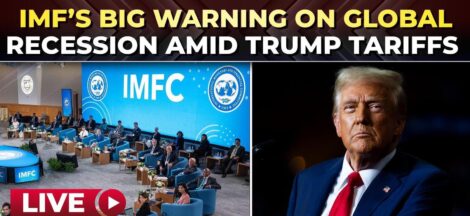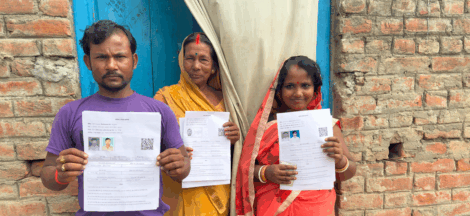By Arun Kumar
India’s per capita income, representing the average income of an Indian citizen, has risen from INR 79,000 in 2013–14 to INR 1,71,000 in 2022–23 — an increase of 116 percent. Therefore, some claim that incomes have more than doubled in India since the present ruling dispensation took office. The catch is that: a) this includes the price increase during the period and hence does not represent the real increase in incomes, and b) the data for 2022–23 and two earlier years is provisional and subject to revision.
The real increase in per capita income, subject to the above caveat, is from INR 68,600 to INR 96,500 during the period, which is an increase of 40.8 percent. This is not bad. However, since these days everything is compared to the earlier United Progressive Alliance (UPA) period from 2004–05 to 2013–14, the numbers are not flattering. Including inflation, the increase during the UPA years was 204.5 percent, while the real increase was 50.3 percent. These are official figures from the Economic Survey, based on the data released by the National Statistical Office — the official agency that estimates and publishes data on national income and related macroeconomic variables.
Further, the average hides the extreme variations in incomes in India – across classes and regions. There is also a differential in the wages earned by men and women for the same work, as also between the young and the old. While an unorganised sector worker may earn INR one lakh, the owner of a company may earn more than INR hundred crore. The average income in Bihar in 2019–20, before the pandemic, was about INR 44,000 while in Haryana, it was close to INR 2,27,000 — a ratio of 5.15. This is not counting the smaller states like Goa, where the income was almost INR 4,68,000.
If incomes represent the welfare of an individual, then the average does not reflect the welfare of the people at the bottom of the pyramid of incomes, especially given that a large number of people are at the base of the pyramid. The unorganised sector employs, by all estimates, over 90 percent of all workers at low wages. The eShram portal data shows that 94 percent of the unorganised sector workers earn less than INR 10,000 per month.
Further, the official data excludes the black incomes which are concentrated in the hands of the few at the top of the income ladder. The poor, by definition, are below the taxable limit, so they do not generate black incomes. Thus, the ratio of incomes between the top earners and the average worker in the unorganised sector will be a multiple of 10,000.
For the moment, leave out the black incomes from the analysis and focus on the government-declared white incomes.
Family income is more important than individual incomes. Among the well off, income is split up among family members to save on taxes. Further, they have a lot of wealth, which yields a return and that supplements their income from work.
For those in the unorganised sector, there is massive unemployment and underemployment, incomes are low and there is hardly any wealth. Further, each earning member has to support two-three other members of the family. The result is that even if individual income is above the poverty line, per person the income is low, and the family as a whole falls below the poverty line. Thus, the disparity, measured in terms of family income, is higher than that indicated by individual incomes, given by per capita income.
Income is an indication of the welfare of the individual and the family. Its corollary is that higher the income, higher the welfare. But that is if all else remains the same. A poor person living in a slum will have far more sickness in the family given the uncivilised conditions they are forced to live in. This is aggravated by lack of proper nutrition and eating unhealthy food. Further, the food they buy may be of poor quality and often adulterated. The water they drink may not be potable and the air toxic. All this makes them more prone to illness, in spite of the fact that they may have a more hardy constitution.
Thus, persistent family illness draws down the income which could help improve their welfare. Any major illness in the family pushes them into poverty since they have to borrow for treatment, and on that they pay a hefty monthly interest. Further, those in production often borrow from the informal money markets where the interest rate is often usurious. Often, they have to bribe the official apparatus to continue business. Both these reduce their incomes and that is not captured by the official per capita income data. Among the poor, there is rising consumption of alcoholic drinks and narcotic drugs. These result in a reduction in the family’s expenditure on welfare enhancing activities like food and education.
There are many employment activities that result in ‘social waste’ which do not increase individuals’ welfare. They are like digging holes and filling them. They give employment and income but do not enhance the capacity of society to produce more in the future which could enhance welfare. Such activities are akin to higher depreciation in production which lowers the net production. Similarly, social waste lowers welfare. Public goods enhance welfare but they are totally inadequate in India compared to the needs of the poor. So, they have a marginal impact compared to the losses due to social waste and pollution, among other things.
The above discussion is based on the assumption that the per capita income data is correct. It is derived by dividing the economy’s net income by the population. Since the net income of the economy is only a rough estimate, the actual income is most likely less and therefore, the per capita income is also less. Correspondingly, people’s welfare is also less.
The over estimation of income is a result of data for the unorganised sector not being estimated independently. Largely, it is assumed that this sector is growing at the same rate as the organised sector. That may have been true prior to demonetisation in 2016, but not after that.
The unorganised sector has suffered a series of setbacks – the structurally-faulty Goods and Services Tax, the non-banking financial companies’ crisis, forced digitisation and attempts to formalise, and finally, the sudden national lockdown of 2020 have decimated this sector. Reports suggest that the organised sector has grown at the expense of the unorganised sector in the last seven years. Demand has shifted from the latter to the former as in the case of retail trade, fast-moving consumer goods, leather goods, textiles, luggage industry, pressure cookers and so on.
In other words, a declining sector which is about 31 percent of the economy is proxied by a rising sector. The official income data largely represents the organised sector and agriculture. So, the size of the economy is far less than what is officially given and correspondingly, the per capita income is also less.
Further, because the incomes of the poor are much less, inequality is much more than the official data implies.
To sum up, not only has the economy not doubled, it has either stagnated or declined since 2016 due to the decline in the unorganised sector, which is not captured officially. Further, due to huge disparities, per capita income does not capture the welfare of the poor. Not only that, the rising extent of social waste further reduces welfare. Thus, the poor are losing far more than the paltry support they get from the government. (IPA Service)
Courtesy: The Leaflet



